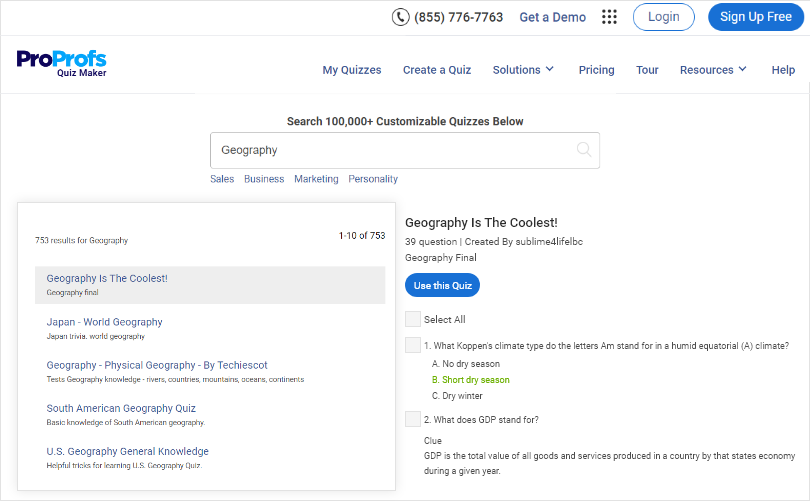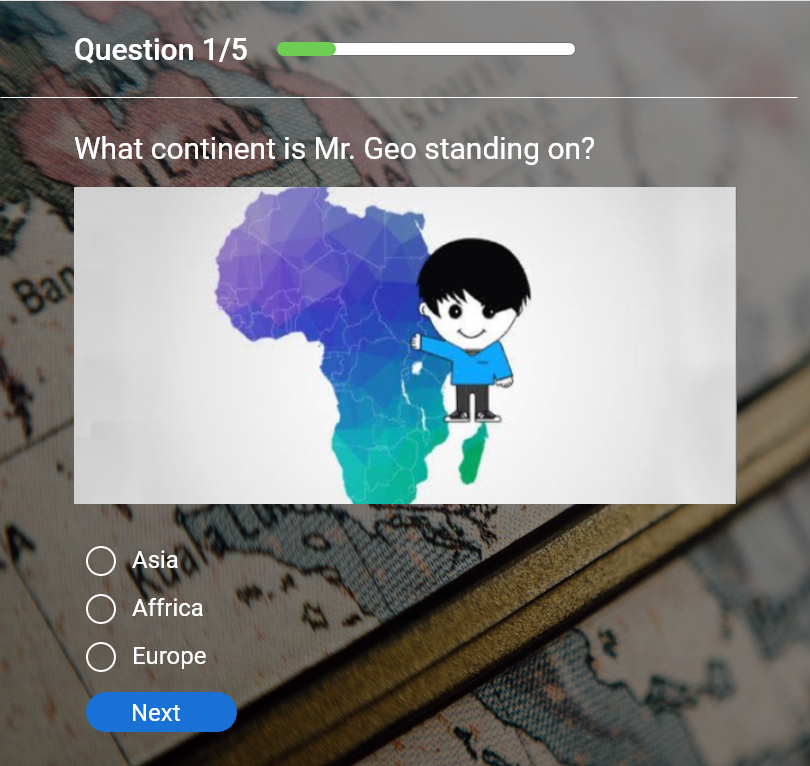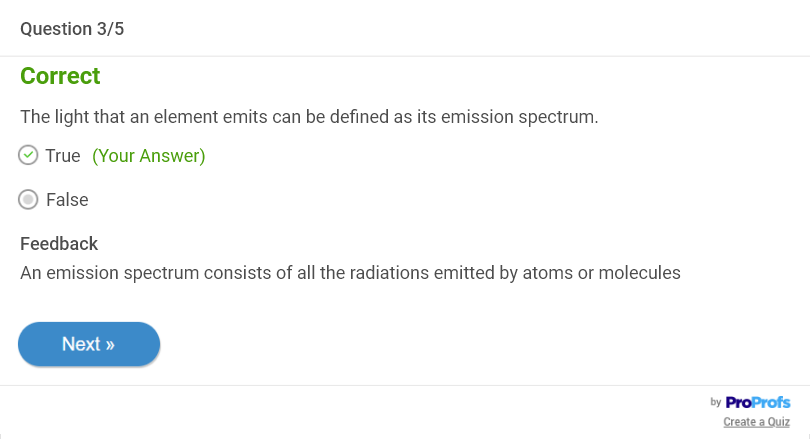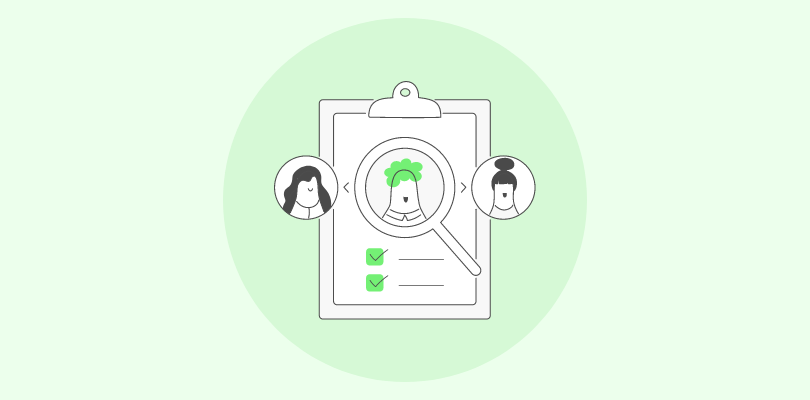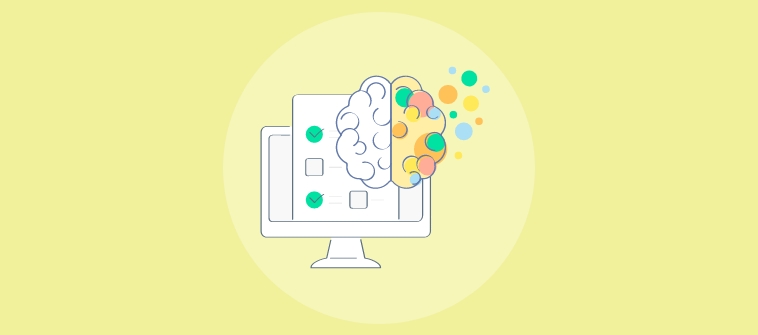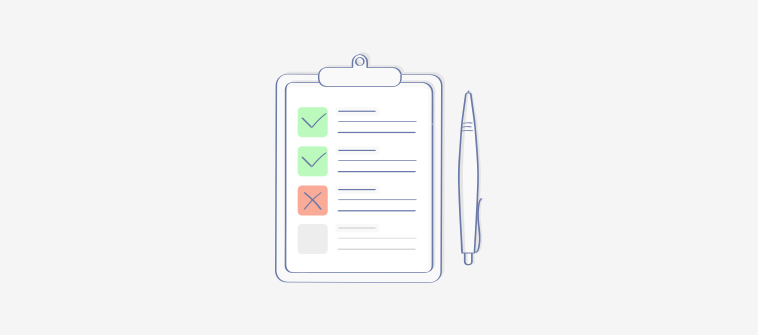
Student assessment is not what it used to be. The traditional method of taking a standardized test and simply hoping for the best is no longer the norm. Now, it is a dynamic and diverse process that aims to enhance learning outcomes for every student.
But what exactly is student assessment, and why is it so important?
How can teachers design and implement effective assessments that meet the needs of their students?
What are the different types of assessments, and how can they be used in various contexts?
These are some of the questions that we will answer in this article. We will explore student assessment’s meaning, types, methods, and importance and provide practical tips on creating the best student learning assessments.
Let’s dive right in.
What Is a Student Assessment?
Student assessment is a way of measuring how much students have learned from their teachers. It involves collecting and comparing data on what students know and can do before and after instruction.
Student assessment can be done differently, depending on the teachers’ and students’ goals and needs. Some examples of student assessment methods are tests, quizzes, portfolios, projects, presentations, and student self-assessment.
Assessments help teachers improve their teaching methods, provide feedback to students, and monitor student progress. It is the bridge that connects teaching with learning.
Watch: How to Create an Assessment Online
What Is the Purpose & Importance of Student Assessment?
Incredibly versatile, student learning assessment serves several purposes. The purpose of student assessment can be classified into three categories:
- Assessment of learning: Measuring and evaluating what students have learned at the end of a unit or course
- Assessment for learning: Conducting formative assessments and using the results to adjust and improve teaching and learning strategies during a unit or course
- Assessment as learning: Engaging students in self-assessment and reflection to monitor and enhance their learning
Student assessment is unarguably a crucial part of the educational landscape for both teachers and students alike. The points below highlight the importance of assessment for teachers and students:
Provides Diagnostic Feedback to Students
Assessment is only effective when it also offers diagnostic feedback to students about their learning. Students need to understand why their answers were incorrect or where they’re lacking.
When you accompany assessment results with constructive feedback, it forms a learning loop for students, allowing them to learn from their mistakes. They can also retake the assessment to see if they fully understand the topic.
Helps Evaluate Teaching Effectiveness
Conducting frequent assessments allows teachers to measure the effectiveness of their teaching. It helps them check how well their teaching methods work and ensure teaching aligns with the learning goals. They can analyze the assessment results and ask for student and teacher feedback.
Helps Track Learning Progress
Student assessments enable teachers to measure student progress and growth over time and pinpoint areas of strength and weakness in student performance. They also help students reflect on their learning and set improvement goals.
Helps Personalize Teaching
By assessing students’ strengths and weaknesses, learning preferences, and areas of improvement, teachers can design and deliver instruction that meets the diverse needs of their students. This way, students can learn at their own pace and level and achieve better outcomes.
Improves Retention
Assessments help students retain what they learned by reinforcing learning and giving feedback. They help students identify gaps or misconceptions and consolidate their knowledge. This way, students remember the information better.
Moreover, assessments in the form of short answer questions can provide better results in helping retain studied material compared to restudying. Further, assessment tests can even improve the retention of subsequently studied information.
Different Types of Student Assessment
Now that you know why student assessments are important, let’s look at the various types of assessments you can conduct.
1. Diagnostic Assessment
Diagnostic assessment is a method of evaluating a learner’s existing knowledge or skills on a specific topic before and after teaching it. It consists of a set of questions that cover the main concepts and objectives of the topic.
Diagnostic assessment has three main purposes:
- It identifies the strengths and weaknesses of the students
- It detects misconceptions or misunderstandings
- It demonstrates how one adapts classroom instruction to meet learning goals.
Diagnostic assessment also helps teachers tailor their instruction according to their students’ current and future needs. Teachers and learners can see how much learners have improved in specific areas by comparing the results of pre-topic and post-topic assessments.
2. Formative Assessment
Formative assessment collects and analyzes data on student learning during instruction. It provides feedback to teachers and students that can help them improve their teaching and learning strategies.
Formative assessment is not for grading or evaluating students but for identifying their strengths and weaknesses and the areas where they need more support or challenge. Here are some formative student assessment examples:
- In-class activities: Tasks that students do in class to show their understanding, such as writing prompts, worksheets, or oral questions
- Homework: Assignments that students do at home and submit for feedback, such as problem sets or vocabulary lists
- Pop quizzes and polls or surveys: Short assessments that teachers use to check student understanding and/or opinions, such as multiple-choice questions or Likert scales
- Student self-assessments: Activities that students do to reflect on their own progress and understanding, using rubrics or other criteria to evaluate their work
- Peer assessments: Activities that students do to provide feedback to each other, using scoring guides or checklists to review their peers’ work
- Multi-part projects: Research projects that students complete in stages, submitting pieces (such as a proposal, introduction, methods, etc.) and receiving feedback before completing the final project
- Pre-tests: Assessments that teachers use to measure students’ prior knowledge or skills on a topic before teaching it
- Unit and chapter tests: Assessments that teachers use to measure students’ learning outcomes at the end of a unit or chapter and guide future instruction
3. Summative Assessment
Summative assessment evaluates the overall achievement of students at the end of a learning process, such as:
- a course,
- a grade level,
- a degree program.
It measures how effective the learning was, how the students reacted to it, and how they benefited long-term.
For example, the standardized tests mandated in many states are summative student assessments. Summative assessments are often called high-stakes assessments because there is so much riding on the results (from a final grade in a single course to one’s chance at getting into a particular college). Summative assessments are often called high-stakes assessments.”
The range of summative assessments isn’t quite as extensive as that for formative assessments:
- Standardized tests: These are tests that measure students’ skills and knowledge based on a standard core curriculum or a
- national or international benchmark. Common Core Assessments and the SAT are examples.
- Mid-term and final exams: Tests at the middle and end of a term or semester.
- Final papers and projects: These assignments require students to demonstrate mastery of the course objectives and outcomes by writing or creating something.
- Senior theses and oral examinations: These projects evaluate students’ cumulative learning throughout their studies. They usually involve extensive research, writing, and presentation skills.
4. Norm-Referenced Assessment
Norm-referenced assessments compare students’ performance to a course average. They show how well or poorly the students did compared to a group of similar students who took the same assessments before.
For example, a student’s score could be compared to those who took the same course in previous years.
Norm-referenced assessments are used for various purposes, such as:
- Evaluating learners’ fundamental reading, writing, and math skills.
- Making decisions about program eligibility or college admissions, like SAT or ACT scores.
- Determining children’s readiness for preschool or kindergarten.
- Identifying specific learning disabilities, such as autism, dyslexia, or nonverbal learning disability.
5. Criterion-Referenced Assessment
Criterion-referenced assessments are assessments that evaluate students’ learning based on a set of predefined learning standards or outcomes. The criteria describe what the students should know or be able to do in an assessment. Criterion-referenced assessments do not compare students to their peers but measure their strengths and weaknesses.
Criterion-referenced assessments are used for various purposes, such as:
- Measuring the academic achievement of students
- Determining whether students have learned the expected knowledge and skills
- Identifying any learning gaps or deficits that need to be addressed
- Evaluating the effectiveness of a course, program, or learning experience
- Measuring progress toward the goals and objectives in the criteria
6. Ipsative Assessment
Ipsative assessment focuses on an individual student’s learning journey. It compares the student’s performance to their previous performance using the same or similar tasks or questions.
Ipsative assessment is a unique and flexible process that can be adapted to different contexts and purposes, such as:
- Motivating students to achieve their personal best and set their own goals.
- Providing feedback to students on their strengths and areas for improvement.
- Encouraging self-reflection and self-regulation among students.
- Supporting differentiated instruction and learning according to student’s needs and preferences.
- Evaluating the impact of teaching and learning strategies on student progress.
So, those were the various types of student assessments. In the next section, we’ve talked about some of the most common and popular methods that can be used for student learning assessment and how to choose the right one.
Methods Used for Student Assessment
Student assessment can be done using two methods: direct and indirect.
Direct methods measure students’ actual learning outcomes or objectives, while indirect methods capture students’ perceptions of their learning.
Here are some examples of each method:
Direct methods
- Visual or audio presentations: You can use a rubric to evaluate students’ presentations on their skills and teamwork. Record their performances and track their improvements.
- Written work: Assess students’ knowledge, analysis, writing, and learning patterns through their written work.
- Portfolios of student work: Review students’ portfolios to see their learning progress and encourage self-assessment.
- In-class tests: Test students’ performance in class tests that are valid, reliable, and objective.
Indirect methods
- Curriculum & Syllabus Analysis: Invite a faculty or student group to analyze the curriculum and syllabus.
- Surveys: Conduct surveys to learn about your students’ attitudes and opinions on different topics.
- Course Evaluations: Create course evaluations with entrance/exit tickets to collect specific student feedback.
- External Reviewers: Ask some colleagues or industry professionals to review the learning outcomes from the student assessments.
How to Choose the Best Student Assessment Method
To select the best assessment tools for your course, you need to ask yourself some questions about your teaching goals, students, grading time, and feedback strategy.
The Michigan State University’s Learning Design & Technology division has created a helpful list of questions for this purpose. Here are some of them:
- What do you want your students to learn? What do they already know?
- Will the assessment be formative or summative? High stakes or low stakes (i.e., how much will they count toward the final grade)?
- How many students do you have? Do you have grading support?
- Will the students receive feedback? How will that feedback be used (i.e., as a learning tool)?
Answering these questions will help you decide how many and what types of student assessment tools to use.
For example, if you want to check quickly whether your students are doing their readings or not, a short quiz delivered online that grades automatically and generates reports would be a good choice.
But if you want to see how well students can apply theory to practice, a problem-based assessment, such as a situational judgment test or a case study-based assessment, would be more suitable.
The key is to define clearly what your students need to learn and design your assessments accordingly.
Evolution of Student Assessments & the Latest Trends
Student assessment has changed a lot over time, following the changes in educational goals, theories, methods, and technologies.
Here are some of the latest trends and developments in student assessment that show how it is evolving and adapting to the new needs and expectations of education in the 21st century:
From paper to computer: Gone are the days when we used paper and pencil to test students’ knowledge and skills. Now we can use computers to do it faster, better, and cheaper.
Computers can score and report results quickly, adapt to students’ levels, use interactive and multimedia items, improve security and accessibility, and save money and trees.
From summative to formative: We used to test students only at the end of a unit, course, or program, mainly for grading or certification. We test them throughout the learning process, mainly for feedback and improvement.
Doing so helps teachers adjust their teaching, students monitor their learning, and both get timely and specific feedback.
From one size fits all to tailor-made: We used to test all students with the same tests or tasks. Now we test each student with different tests or tasks that suit their needs, preferences, and abilities.
Such assessments aim to provide a more accurate and meaningful measure of student learning by considering factors such as prior knowledge, learning styles, interests, goals, and progress.
From what to how: We used to test students only on what they know or can do in a subject area. Now we also test them on how they think or use strategies to solve problems or complete tasks. Such assessments focus on students’ reasoning, problem-solving, creativity, and self-regulation skills.
From human to machine: We used to rely on human raters or judges to evaluate students’ responses or products on a test or task. Now we can use machines to do it automatically and reliably. Machines can score faster, more consistently, and more cheaply.
Watch: How the University of Zurich Streamlined Assessments & Reduced Workload
Challenges in Student Assessment (& Strategies to Overcome Them)
Student assessment has changed significantly. However, it still faces some challenges, such as:
- How to align the assessment with the educational standards and the curriculum’s learning objectives?
- How to balance external and internal assessments and formative and summative assessments to measure student learning and provide timely and constructive feedback?
- How to design authentic and meaningful assessments that engage the students and prepare them for life beyond the university?
- How to ensure assessment is inclusive and fair for all students, regardless of their backgrounds, abilities, and preferences?
- How to manage the workload and time involved in creating, administering, grading, and providing assessment feedback?
- How to prevent and detect plagiarism and contract cheating among students?
These challenges require teachers to adopt effective strategies to overcome them and enhance the quality and impact of student assessment. Some of these strategies are:
Developing competencies for evaluation and for using feedback:
Teachers and students need to learn how to assess and improve their own work and how to use the comments or suggestions from others to do better. For example, students can rate their own performance on a test or a project and compare it with the teacher’s rating.
Adopting a program-level approach to assessment:
The assessment should be consistent throughout the course or program, not just for each module or topic.
The assessment should also match the goals and outcomes of the course or program and be integrated with the teaching and learning activities.
Designing authentic assessments that simulate real-world situations or problems:
The assessment should be relevant and meaningful for the students and prepare them for what they will face in their future careers or lives.
The assessment should also challenge the students to use their knowledge and skills in new and creative ways.
Ensuring that the assessment is inclusive and accessible for all students: The assessment should respect and accommodate the students’ different needs, preferences, and backgrounds.
The assessment should also be fair and transparent for everyone and not disadvantage anyone. For example, students can choose different options or formats for the assessment, such as written or oral, online or offline, individual or group.
Managing the workload and time involved in assessment:
Teachers and students need to use efficient and effective student assessment tools and methods to create, do, grade, and provide feedback on the assessment. The assessment should also not be too much or too little for teachers and students.
Preventing and detecting plagiarism and contract cheating:
Teachers and students need to understand and follow the rules of academic honesty and integrity and not copy or buy someone else’s work. The assessment should also be original and unique for each student and not easy or possible to cheat on.
Teachers can also use online assessment software with proctoring and anti-cheating capabilities to conduct cheat-proof student assessments. Such software tools also let you add time limits, further discouraging cheating.
Watch: How to Create a Timed Quiz
How to Create a Student Assessment
Creating a student assessment is rather a process that involves a careful selection of assessment types and methods, which we have talked about above.
Step 1: Define Learning Objectives
Your assessments need to match the student learning objectives and outcomes if they are to be valid measurements of the desired learning.
So, the first step in creating an effective student assessment is to define your learning objectives.
The learning objectives you set should be brief and precise. For example, if you’re creating an assessment on renewable energy resources, the objective could be students to be able to recognize the impact of different types of resources.
Step 2: Pick an Assessment Type
After you’ve set your learning objectives, pick an assessment type from the abovementioned assessments.
Consider your learning objectives while picking the type. If you wish to assess students’ pre-existing knowledge about the topic, use the diagnostic assessment.
If you’ve already taught the topic and wish to assess retention, go with a formative assessment.
Step 3: Select a Method
The methods you choose for assessment will vary depending on the learning outcome(s) you wish to achieve. Select a method that helps you encourage, enable, and support learning.
Also, base your choice on the frequency your students need to be assessed. Focus on how much attention and energy you want your students to invest in the assessments and choose accordingly.
Step 4: Create the Assessment
Once you’ve decided on an assessment type and method, you can set up your assessment. Here’s how the process looks if you create a quiz for your student assessment:
- Step 1: Choose a quiz template or build a quiz from scratch.

- Step 2: Create or import quiz questions from a question bank.
- Step 3: Add images, videos, and instant feedback to make your quiz more engaging and effective.


- Step 4: Configure settings for scoring, security, cheating prevention, notifications, and more.
- Step 5: Add and customize a theme to give your quiz an appealing look.
- Step 6: Share the quiz with your students via a link, virtual classroom, website embed, or QR code.
Read More: Learn about creating online assessment quizzes for education with our comprehensive guide.
Step 5: Analyze the Results
After you have administered the assessment and collected the data, you need to analyze the results to evaluate your assessment’s effectiveness and student learning outcomes.
This can be a challenging and time-consuming task, especially if you have a large number of students or a complex assessment design.
However, there is a way to make the analysis process much easier and faster: online quizzes for student assessment.
Online quizzes can automatically generate reports and statistics for your student assessment results, saving you time and effort. You can access and view the reports and statistics in various formats, such as:
- Scores: Online quizzes can show you the scores of each student, as well as the average, minimum, and maximum scores of the whole class or group.
- Question analysis: Online quizzes can give you detailed information on each question in the quiz, such as the difficulty level, the time taken per question, and the percentage of correct and incorrect responses.
- Individual and group analysis: Online quizzes can help you better understand your students’ learning by showing you individual students’ or groups’ performance and progress.
By using online quizzes for student assessment analysis, you can gain valuable insights into your student’s learning and your own teaching and assessment strategies.
Watch: How to Review Reports & Statistics in Online Quizzes
To create a compelling student assessment, you need to follow the steps that we discussed earlier. But some best practices can enhance the whole process. Let’s learn about them in our final section.
Student Assessment Best Practices
Using the following tips, you can ensure that your student assessments give you the desired results and help improve learning outcomes.
Ask Better Test Questions
If you’re creating a quiz for your assessment, you need to get your questions right. Here’s how to do that:
If you’re creating a quiz for your assessment, you need to get your questions right. Here’s how to do that:
- Use clear, concise language that avoids ambiguity, jargon, or bias.
- Use different question formats based on the type of knowledge you want to assess, such as multiple-choice, short answer, essay, or performance-based.
- Align your questions with your learning objectives and measure the students’ learning outcomes.
- Use verbs from different levels of Bloom’s taxonomy to design questions that target different cognitive skills, such as remembering, understanding, applying, analyzing, evaluating, and creating.
- Provide feedback to your students after each question, explaining why their answers are correct or incorrect and how they can improve.
Watch: Question Types for Online Learning & Assessment
Use Performance-Based Assessments
While assessing knowledge through more traditional means, like multiple-choice tests, can be useful, performance assessments may be better ways to measure and improve learning in certain cases, such as language learning.
Performance assessments can include:
- Using projects to evaluate mastery: Students create a product or a solution that shows their understanding of a topic or a concept.
Creating work portfolios: Students collect and present samples of their work over time that show their growth and achievement in a specific area or skill. - Demonstration of work: Students perform a task or an activity that requires them to apply their knowledge and skills in a realistic or simulated context.
- Behavior-based reviews: Students receive feedback and evaluation based on their behavior and performance in the classroom or other settings.
- Essay-type questions: Students write a response to a question that tests their comprehension, analysis, synthesis, or evaluation of a topic or a concept.
- Oral examinations: Students answer questions orally before an examiner or a panel that assesses their knowledge, skills, and communication abilities.
Interviews: Students converse with an interviewer or a group of interviewers that explores their interests, experiences, goals, and opinions.
💁♂️Pro Tip:
If you plan to conduct an oral examination or interview for your student assessment, you can do so in a highly flexible way by asking audio/video response questions in an online quiz. This way, students can take the student assessment at a time and place of their preference.
Watch: How to Create a Video Interview Question
Use Grading Rubrics
Grading rubrics are tools to grade subjective tests and performance tasks. They help students know what is expected, and teachers grade faster and more consistently.
You can find many free rubric templates online for common student assessments. You can also make your own rubrics by defining the expectations and assigning numerical values for each level of achievement.
Leverage Technology to Save Time and Enhance Learning
Traditional assessments take too long to grade and return to students. This delays the feedback they need to learn effectively.
Online technologies, such as student assessment software, can help you reduce this lag time and give students instant feedback. You can let the software do the heavy lifting of marking questions and generating results and reports. This will save you time that you can use to improve your instruction.
Watch: How to Automate Assessment Scoring & Grading
The best online assessment tools can further enhance the student assessment process by letting you ask questions in various ways, manage learners centrally with virtual classrooms, create quizzes in minutes using AI or ready-to-use questions, and get detailed statistics on student performance.
Watch: How to Choose the Best Assessment Software
Use the Right Assessment Type
Not all assessments are equally suited for different purposes and contexts. Therefore, choosing the appropriate assessment type for your goals and needs is essential.
For example, norm-referenced assessments are unsuitable for identifying your classroom’s learning gaps. Similarly, ipsative assessments won’t be effective if you’re looking to provide your principal with a summary of student achievement in your classroom.
Use Various Types of Assessment
Make sure you use a mix of assessments for every topic you teach.
Begin with a diagnostic assessment to check what students remember. This will help you plan engaging lessons.
After each lesson, use short quizzes or exit tickets to see what students learned and what they still wonder about. You can then adjust your teaching or give extra help as needed. When students are ready, give a summative assessment to see how well they learned.
If some students need more practice, you can give them feedback and opportunities to grow. You can also promote a growth mindset by celebrating students for trying hard and learning from errors!
So, those were all the tips for creating impactful student assessments. When appropriately followed, these strategies will help power your student assessment process.
Assess Students Easily With Online Quizzes
Student assessment is essential for teaching and learning. It helps you measure your student’s learning outcomes and evaluate your teaching effectiveness. It helps you and your students identify strengths and weaknesses, provide feedback, adjust instruction, monitor progress, and enhance reflection and self-regulation.
Online quizzes are one of the best ways to conduct student assessments. They are easy to create, fun to take, and quick to grade. They can cover various learning objectives and give instant feedback and analytics to you and your students.
ProProfs Quiz Maker is the ultimate online quiz maker for student assessment. It lets you create quizzes in seconds with the help of the AI-quiz generation feature and share and track quizzes too. You can choose from 100k+ ready-made quiz templates or create your own from scratch. You can add multimedia, ask questions in 15+ formats, and customize your quizzes with 100+ settings.
Student Assessment FAQs
What is the meaning of student assessment?
Student assessment is the process of collecting and analyzing information about what students know and can do concerning the learning objectives of a course or program. Student assessment can be used to provide feedback, improve instruction, measure learning outcomes, and evaluate the effectiveness of teaching and learning.
Which assessment is best for students?
There is no single best assessment for all students, as different assessments have different purposes, strengths, and limitations. The best assessment for students depends on the learning objectives, the context, the skills, and the characteristics of the students.
Some factors to consider when choosing an assessment are validity, reliability, fairness, alignment, authenticity, feasibility, and feedback.
What is the role of the teacher in the assessment for learning?
The role of the teacher in the assessment for learning is to use ongoing and formative assessments to monitor student progress, identify strengths and weaknesses, provide timely and specific feedback, adjust instruction accordingly, and involve students in self-assessment and peer assessment.
The teacher also needs to communicate clear learning goals and success criteria, use a variety of assessment methods and tools, and create a supportive and collaborative learning environment.
How do teachers choose the right type of assessment for their students?
Teachers choose the right type of assessment for their students by considering the following questions:
- What are the learning objectives, and how will they be measured?
- What are the characteristics and needs of the students?
- What are the available resources and constraints?
- What are the benefits and challenges of each assessment method?
- How will the assessment results be used and communicated?
- By answering these questions, teachers can select an appropriate assessment method that aligns with the learning objectives, suits the student’s abilities and preferences, fits the context and content, provides valuable information, and supports student learning.
What are some standard methods used for student assessment?
Some standard methods used for student assessment are:
- Written tasks, such as essays, reports, quizzes, tests, exams, journals, portfolios, etc.
- Oral tasks, such as presentations, discussions, debates, interviews, etc.
- Performance tasks, such as projects, products, demonstrations, simulations, experiments, etc.
- Self-assessments, peer-assessments, observations, and rubrics
Do you want free Quiz Software?
We have the #1 Online Quiz Maker Software for complete learning & assessment

